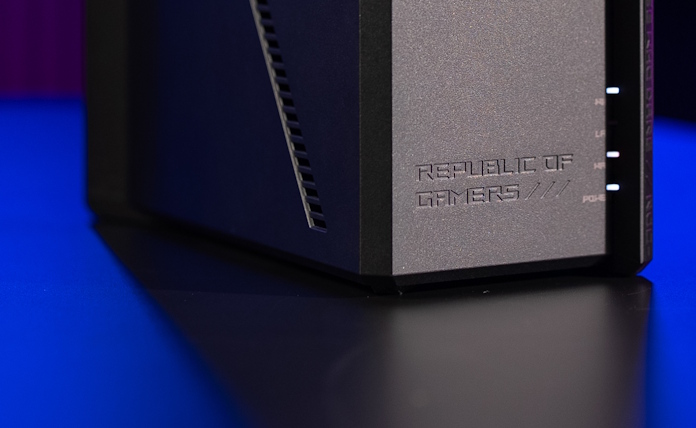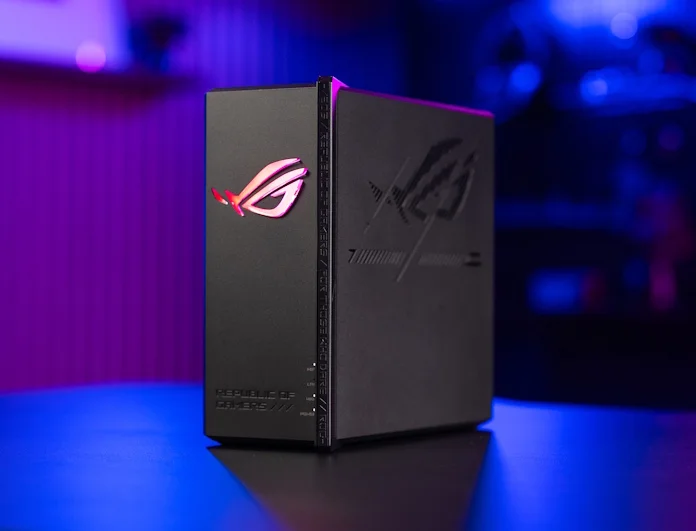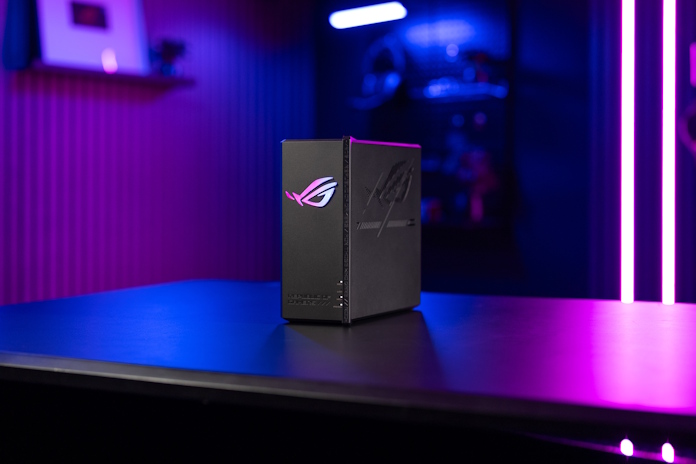WiFi 7 offers a head-turning speed boost over WiFi 6, even before you factor in the 6GHz band. Yet there are plenty of reasons why many people are paying close attention to this recently opened swath of spectrum. Some want even more speed, and with its support for ultra-wide 320MHz channels on the 6GHz band, WiFi 7 can do just that. Others live in an area with many competing 5GHz WIFi networks, and they’re looking for a way to rise above the noise and enjoy reliable, interference-free wireless networking. The 6GHz band and WiFi 7 can do that, too.
While the availability of the 6GHz band has solved a lot of problems for a lot of people, it has been operating under some tight regulatory restrictions. For reasons that we’ll dig into in a moment, the first routers with 6GHz band support were required by law to operate in a low-power mode, which restricted their range when communicating over the 6GHz band.
That’s where Automated Frequency Coordination (AFC) comes in. Routers with AFC support, like the ROG Strix GS-BE18000 gaming router, are capable of setting aside the limitations holding back the 6GHz band, letting you enjoy more of the advancements of WiFi 7 more often. Let’s take a closer look at why the lower power mode was necessary for the 6GHz band in the first place, when and how AFC can let you sidestep that restriction, and what AFC means in practical terms for your home network.
Like a car with a top-end speed that you’d like to use more often
Most of the time, the rules of the road prevent us from driving our cars at their maximum possible speeds. For safety reasons, we can’t blaze through residential streets at the same speed that we hit as we barrel down an interstate highway.
Your experience with the 6GHz band thus far has likely been pretty similar. When you have a router and a device that can communicate over this band, you’ll enjoy some of the best wireless networking speeds you’ve ever encountered, provided that you’re close enough to the router — on the highway, to keep the analogy rolling.
For many folks, that isn’t much of a restriction. The places in their homes where they require the fastest connections, like their home offices or home entertainment centers, are close enough to their router to get the full benefit of the 6GHz band and the new WiFi 7 features like 320MHz channels that this band makes available. Their local highway gets the job done.
But other people have places in their home where the 6GHz band doesn’t quite reach. It’s like a highway that’s easy to access from your home but doesn’t have an exit close to your work. With such a commute, you’re not able to take full advantage of your car’s higher-end speeds the entire journey. You’re still able to get where you need to go, but your trip could be faster if the roads were designed differently.
AFC support is a bit like a highway extension project that allows you to take advantage of the higher speeds of your car for more of your daily commute. It increases the percentage of your daily driving time that’s spent in the fast lane rather than slower side streets.
Why the 6GHz band came with restrictions in the first place
At this point, you might well be wondering why these limitations on the 6GHz band were necessary in the first place. Who designed this road with such a low speed limit, anyway?
The answer is safety, both for residential streets and the 6GHz band. While the 6GHz band hasn’t been available for consumer use until recently, it has been in use for some time, and the folks who have been using it play a vital role in keeping your community safe. These pre-existing, licensed users include many important services. Utility companies use the 6GHz band to maintain or repair electric and gas lines. Public safety agencies, including police and fire departments, make use of it. Railroads use it to keep trains safe. These agencies were rightly concerned about how consumer access to the 6GHz band might threaten to create signal interference in these users’ mission-critical communications, which could put the general public at risk.
To protect these critical institutions’ communications in the United States of America, the Federal Communications Commission (FCC) required every new, unlicensed consumer using the 6 GHz band to operate in Low Power Indoor (LPI) mode. (In Canada, a similar requirement was issued by the Innovation, Science and Economic Development [ISDE] office.) Essentially, LPI mode limits the transmission power of unlicensed users so that their signals don’t interfere with official communications. For users of the 6 GHz band, the result of LPI is shorter-range coverage.
AFC allows for a higher-power 6GHz band mode wherever possible
For a while, LPI did its job. Businesses and households with WiFi 6E devices were happy to run their network routers in LPI while enjoying faster WiFi service wherever possible. Then came WiFi 7. New back-end tech that shipped along with the new wireless standard made the 6GHz band into more than just an alternative, low-congestion communication stream. Features like 320MHz channels and Multi-Link Operation allow for higher-bandwidth, faster, more stable connections, but they either require a 6GHz connection or are greatly accelerated by it. As a growing number of newly released laptops, smartphones, tablets, and desktop PCs come with WiFi 7 compatibility, the pressure to get more value out of the 6GHz band increases.

Not every street in your city needs the same speed limit, and not every location needs the same restrictions on the 6GHz band. While there are plenty of places where LPI mode is a reasonable, safety-first restriction, there are many more places where it’s unnecessary. The trick is to identify where those places are and selectively set aside the restrictions where they’re not needed.
How Automated Frequency Coordination keeps traffic flowing
From a birds’ eye view, that’s exactly what AFC does. It provides a mechanism for your router to check an online database to see if a higher-power mode would cause safety issues. If it gets the go-ahead, the restraints come off and it switches from Low-Power Indoors (LPI) mode to Standard Power (SP) mode.
The FCC gave the greenlight for AFC systems back in 2024, and the industry moved forward cautiously to ensure a safe, smooth rollout. Today, AFC is available in the United States and Canada, and the process looks like this. First, AFC-compatible routers report their location and other necessary information to a cloud server, which maintains a database of mission-critical users of the 6GHz band. Next, the AFC system automatically calculates the frequencies and power levels that are available for use in your area. This step prevents potentially life-threatening interference with communications. Finally, the AFC system returns a list of available frequencies and power limits to your router. This process happens once every 24 hours.
Other regions and countries, including the EU, Brazil, and Japan, are evaluating AFC implementation. If you’re purchasing a WiFi 7 router in 2025, it’s prudent to check that its capabilities align with the regulatory requirements of your country.
AFC does require location information, but the system is fully opt-in
Just to be extra clear about a key point: for your AFC router to activate Standard Power mode, it does need to communicate location data with the cloud server. For that reason, AFC is entirely opt-in. If you don’t enable AFC, your location data won’t be shared. Where does AFC get information about your location? Primarily, it uses location information from your smartphone. For the most consistent experience, use the ASUS Router app on your smartphone, giving it permission to access your location. When you enable AFC in the ASUS Router app, it’ll be able to pass along this information to the AFC system to help determine your router’s location.
What AFC support means for your network
Provided that it gets the go-ahead from the AFC network, your AFC-compatible ASUS router can switch from LPI to Standard Power (SP) mode, giving you the full WiFi 7 experience. How much of a power increase can you expect?

End users will primarily notice the improved range. Through AFC, you’ll have a more stable connection over the 6 GHz band even when roaming farther away from your router, with performance increases becoming especially noticeable at mid-to-longer ranges beyond 52 feet. Since many, but not all, of the speed improvements that come with WiFi 7 involve the 6 GHz band, AFC support gives you more of the benefits of WiFi 7 more often.
The exact benefit of AFC varies depending on channel width. Most modern routers automatically select channel width for you so that you get the best balance of stability and speed. In the US, most routers default to using 160MHz channels unless there’s significant interference. Devices connected this way will get large gains from activating AFC mode, as their transmission power boosts by a factor of up to 8x. Devices communicating over 320MHz channels will enjoy a power increase of up to 4x. At lower channel widths, you’ll see the highest performance increases. Connections over 80MHz channels get a performance gain of up to 16x, and 20MHz channels enjoy a whopping increase up to 63x.
AFC gives you more value out of MLO
On top of all that, AFC will potentially maximize the value of one of WiFi 7’s most exciting new features, Mult-Link Operation (MLO). MLO can boost your internet connection’s performance or substantially strengthen its reliability, depending on its operating mode. How?
Through MLO, WiFi 7 routers and devices communicate over multiple bands simultaneously. As with using three fully loaded trucks simultaneously to deliver goods rather than sending one truck on three separate trips, it’s capable of greatly increasing throughput. It can also boost reliability. It’s like sending a critical message via three different couriers. Even if one encounters a delay, one of the others can still deliver the message quickly.
Simply put, AFC and MLO work better together. When your AFC router is able to run in its higher-power SP mode, it gains access to a larger area where connected devices can use all available bands. The result is more square footage where MLO can come into play, allowing you to enjoy its benefits more of the time.
How to start using AFC
Right now, AFC support is just rolling out across the WiFi 7 ecosystem. The first ASUS router to feature this technology is the ROG Strix GS-BE18000. This wireless router brings together cutting-edge technology, sophisticated thermal design, and effortless management tools, giving you a next-level networking experience for both wired and wireless devices. Wielding a wide array of 2.5G Ethernet ports alongside advanced WiFi 7 tech, including support for the 6GHz band and AFC, this router offers incredible value for home networks everywhere.

You can activate AFC using this router through either the ASUS Router app or the Web GUI, though we do recommend using the smartphone app for the best experience. In the ASUS Router app, head over to Settings, WiFi, then AFC. Just tap the slider to Enable AFC. Alternatively, using the graphic user interface, you can click on Wireless, then General, and scroll down to click the slider beside AFC to On. Be sure to click Apply before leaving the screen to save your settings.
With AFC on your new ASUS router, you can enjoy the blazing-fast speeds of WiFi 7 over longer distances. And you’ll get greater stability along with the increased speed. Best of all, your connections will remain interference-free no matter how crowded the information superhighway becomes. To get started today, set your sights on the new ROG Strix GS-BE18000. To receive email updates as we launch new router options, use the “Subscribe to Our Newsletter” tool in the upper right-hand corner of this page.

